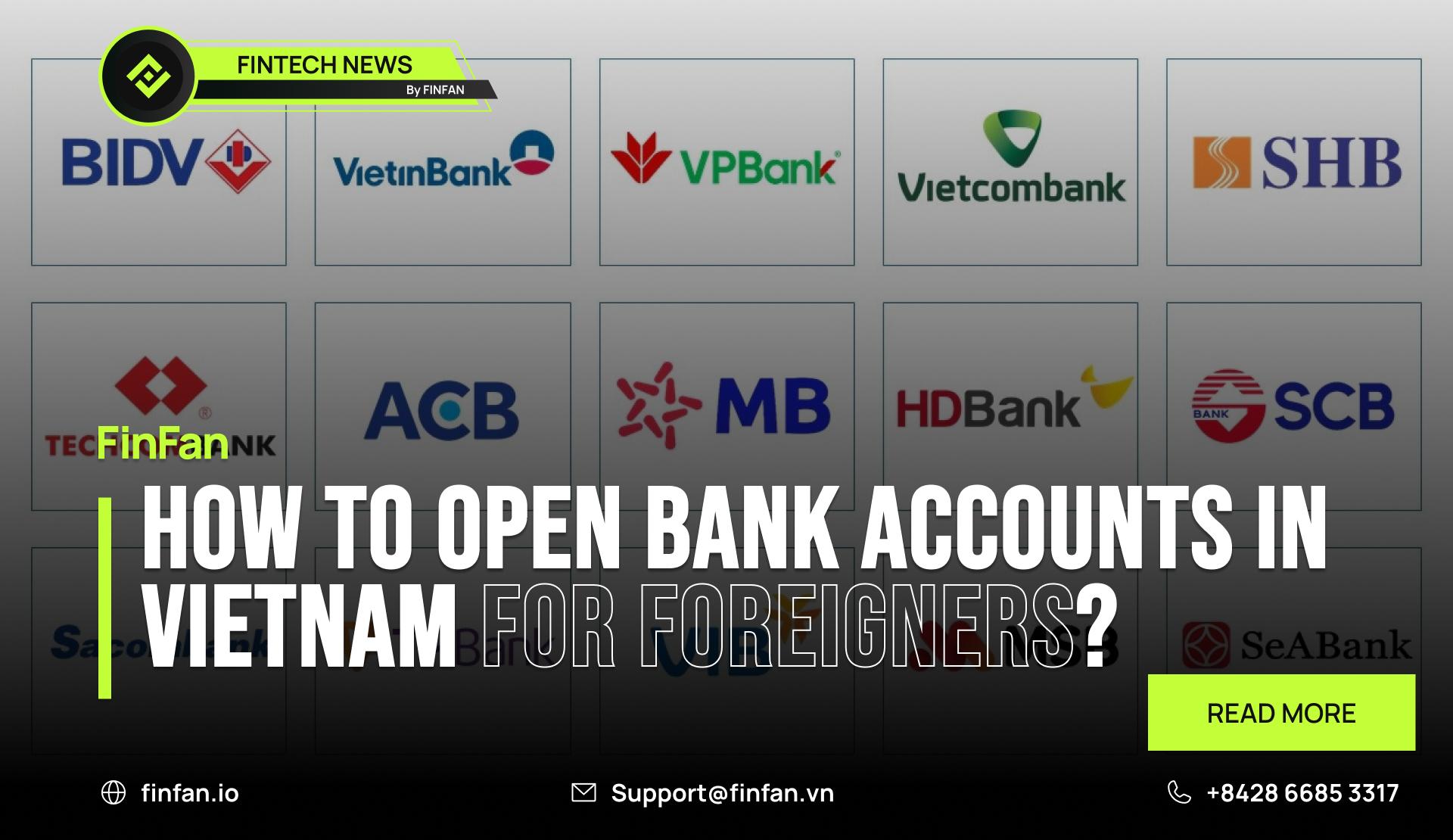How to open bank accounts in Vietnam for foreigners

As Vietnam's dynamic society continues to flourish, it has become an increasingly attractive destination for individuals from diverse backgrounds seeking educational, professional, or leisure opportunities.
This influx has correspondingly heightened the demand for seamless payment and money transfer solutions amongst foreign nationals residing within the country. However, due to currency restrictions, foreign individuals are unable to utilize and circulate currencies other than the Vietnamese Dong (VND) within Vietnam.
Consequently, the need for currency exchange services is substantial, and for those intending to extend their stay, a Vietnamese bank account becomes indispensable for accessing online money transfer services and converting foreign currencies into VND.
In our previous article, FinFan delved into the intricacies of utilizing remittance apps for swift currency conversion to VND for foreign students in Vietnam. Building upon this, this article will comprehensively guide foreign individuals through the process of opening a bank account in Vietnam.
Some identification documents that foreigners have to present to have bank accounts in Vietnam.
To open bank accounts in Vietnam, foreigners have to present some identification documents:
-
Valid passport (with at least 6 months validity remaining)
-
Valid visa (tourist visas typically work but check with the bank for their requirements. Some banks may require work visas or temporary residence cards)
-
Application form (completed at the bank)
-
Proof of residence in Vietnam (rental agreement, utility bill) might be required by some banks.
-
Minimum opening deposit (amount varies depending on the bank)
-
A work permit or business license (needed for business accounts) might be requested.
The procedure of opening bank accounts in Vietnam for foreigners
Step 1: Bank Selection
In Vietnam as of January 28, 2024, there are 49 banks operating in Vietnam, of which 31 are joint-stock commercial banks.
In addition, there are around 9 wholly foreign-owned banks in Vietnam (Source: mof.gov.vn). These banks are international in their origin and operations, and the number of foreign bank branches is around 49 in general.
The figures above demonstrate that currently, foreigners have plenty of options to open bank accounts in Vietnam.
Therefore, it's essential to thoroughly research the policies, card and account management fees, as well as domestic transfer fees (if the bank is not partnered with Napas), etc.
Furthermore, if you intend to open a savings account, carefully read the contract to ensure that the bank utilizes your funds for their intended purpose, rather than investing in illiquid bond funds or other undesirable insurance services.
Step 2: Visit the bank and complete the necessary procedures to establish an account.
Once you have selected a bank, proceed to the nearest branch with the required documents mentioned above.
Ensuring that you bring only the types of documents specified by the chosen bank and relevant to your purpose.
Notice: Remember that the bank's customer care hotline operates 24/7, allowing you to inquire about any necessary documentation for opening a bank account in Vietnam.
When you arrive at the bank, the bank staff will guide you through filling out the detailed form for opening a bank account in Vietnam.
Your task at this stage is to follow all instructions provided by the bank advisor and submit the prepared documents related to customer or business identification before the bank proceeds with issuing your bank account.
Step 3: Complete the step of identity verification for individuals or businesses and proceed to sign the bank account opening agreement.
After submitting all required documents and filling out the registration form, the bank advisor will proceed to verify your personal or business information.
If there are no issues, the next step involves the advisor sending you the bank account opening agreement of your chosen bank.
At this point, carefully read the terms of the agreement to avoid any situations as mentioned earlier, and sign in the designated spaces as instructed by the bank advisor.
Notice: Your signatures must match each other and be consistent with the signature style you commonly use for document signing, as you may need to use them consistently for future banking procedures such as deposits, withdrawals, updating information, etc.
Step 4: Deposit the initial amount into the account and settle any card issuance fees (if requested).
After signing, you will proceed to deposit the initial amount into the account. Typically, this amount is the minimum required to maintain the account's activity in the subsequent years and to cover any fees associated with physical card issuance or card maintenance (if applicable).
Step 5: Account Activation
After completing all documentation procedures, bank staff will guide you on how to use the app, internet banking (if you have created a payment account), or hand you the savings passbook (if you have created a savings account), etc.
Subsequently, your bank account will be activated, allowing you to utilize it for domestic transactions within Vietnam, receive remittances from abroad, or leverage remittance apps partnered with FinFan to convert international currencies into VND and use them domestically.
Additional considerations of opening bank accounts in Vietnam for foreigners
Account Types
Foreign individuals may choose from various account types, such as savings accounts, current accounts, or joint accounts.
Banking Fees
Inquire about applicable banking fees, such as account maintenance charges, transaction fees, and ATM withdrawal fees.
Multi-currency Accounts
Explore the option of opening a multi-currency account to manage multiple foreign currencies simultaneously.
Read more:
. 4 Benefits of a Multi-Currency Account for Your Business and How to Choose the Right Provider
Online banking services
Activate online banking services for convenient account management and transactions.
Language Assistance
Request language assistance if necessary to ensure clear communication and understanding during the account opening process.
Conclusion regarding opening bank accounts for foreigners in Vietnam.
In conclusion, opening bank accounts for foreigners in Vietnam involves several steps, including selecting a suitable bank, preparing necessary documents, completing paperwork, depositing initial funds, and familiarizing oneself with banking tools and services.
As Vietnam's economy continues to grow and attract a diverse range of expatriates and visitors, the demand for banking services tailored to foreigners is on the rise.
By understanding the procedures and requirements outlined by banks, foreigners can efficiently establish accounts to facilitate their financial activities within the country, whether for daily transactions, savings, or international remittances.
This article was curated and authored by FinFan's market research and development team, alongside our marketing department.
About FinFan
FinFan is a cross-border embedded financial services company that focuses on mass disbursement, fund collection, card processing, IBAN, and digital APMs solutions, which can provide valuable input and integration on and for the same.
FinFan is already integrated with almost the world's well-known MTOs, PSPs, switch, and core fintech platforms such as Money Gram, Thunes, Qiwi, Remitly, World Remit, Bancore, PaySend, Terrapay, Ria Money Transfer (Euronet), Dlocal, Ripple, TripleA, FoMo Pay, Wings, etc. For more information, please contact us through:
🌐https://finfan.io
📞(+84) 2866 85 3317
✉ support@finfan.vn
LinkedIn: FinFan





